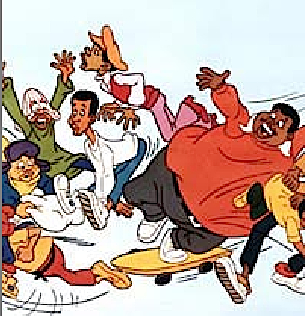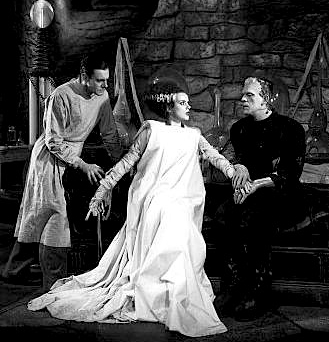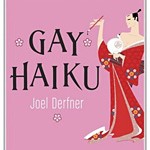Yesterday, I suggested that a dandy way to prepare for a conversation with a real, live agent or editor was to sit down and come up with a list of selling points for your book. Or, if you’re pitching nonfiction, how to figure out the highlights of your platform.
Not just vague assertions about why an editor at a publishing house would find it an excellent example of its species of book — that much is assumed, right? — but reasons that an actual real-world book customer might want to pull that book from a shelf at Barnes & Noble and carry it up to the cash register.
It may seem like a pain to generate such a list before you pitch or query, but believe me, it is hundreds of times easier to land an agent for a book if YOU know why readers will want to buy it. Trust me, “I spent three years writing it!” is not a reason that is going to fly very well with agents and editors.
Why? Well, pretty much everyone who approaches them has expended scads of time, energy, and heart’s blood on his book; contrary to what practically every movie involving a sports competition has implicitly told you, a writer’s WANTING to win more than one’s competitors is not going to impress the people making decisions about who does and doesn’t get published.
I’m not bringing this up randomly — many, many pitchers (and quite a few queriers as well) make the serious marketing mistake of giving into the impulse to tell the pitchee about how HARD it was to write this particular book, how many agents have rejected it, at how many conferences they’ve pitched it, etc. (For some extended examples, please see my earlier post on the subject.)
They believe, apparently, that pitching (or querying) is all about demonstrating just how much their hearts are in their work. As charming as that may be (or pathetic, depending upon the number of tears shed during the description), this approach typically does not work. In fact, what it generally produces is profound embarrassment in both listener and pitcher.
Which is why, counterintuitively, figuring out who will want to read your book and why IS partially about heart: preventing yours from getting broken while trying to find a home for your work.
I’m quite serious about this. Apart from the very real benefits having such a list by your side when pitching, I like to ask writers about their books’ selling points before they pitch or query in order to pull the pin gently on a grenade that can be pretty devastating to the self-esteem. A lot of writers mistake professional questions about marketability for critique, hearing the fairly straightforward question, “So, why would someone want to read this book?” as “Why on earth would ANYONE want to read YOUR book? It hasn’t a prayer!”
Deriving these impressions, some writers shrink away from agents and editors who ask it — a reluctance to hear professional feedback which, in turn, can very easily lead to an unwillingness to pitch or query.
“They’re all so mean,” such writers say, firmly keeping their work out of the public eye.
This response makes me sad, because the only book that hasn’t a prayer of being published is the one that is never submitted at all. There are niche markets for practically every taste, after all. Your job in generating selling points is to SHOW (not tell) that there is indeed a market for your book.
Ooh, that hit some nerves, didn’t it? I can practically hear some of you, particularly novelists, tapping your feet impatiently. “Um, Anne?” some of you seem to be saying, with a nervous glance at your calendars, “I can understand why this might be a useful document for querying by letter, or for sending along with my submission, but have you forgotten that I will be giving VERBAL pitches at a conference just a couple of short weeks away? Is this really the best time to be spending hours coming up with my book’s selling points?”
My readers are so smart; you always ask the right questions at precisely the right time.
Before you pitch is EXACTLY when you should devote some serious thought to your book’s selling points. Because, you see, if your book has market appeal over and above its writing style (and the vast majority of books do), YOU SHOULD MENTION IT IN YOUR PITCH. Not in a general, “Well, I think a lot of readers will like it,” sort of way, but by citing specific, fact-based REASONS that they will clamor to read it.
Preferably backed by verifiable statistics.
Why? Because it will make you look professional in the eyes of the agent or editor sitting in front of you. And because, really, no agent is going to ask to see a manuscript purely because its author says it is well-written, any more than our old pal Millicent the screener would respond to a query that mentioned the author’s mother thought the book was the best thing she had ever read with a phone call demanding that the author overnight the whole thing to her.
“Good enough for your mom? Then it’s good enough for me!” is not, alas, a common sentiment in the industry. (But don’t tell Mom; she’ll be so disappointed.)
Enough pep talk for today; let’s get back to work.
Last time, I concentrated on the standard writing résumé bullet points yesterday, but try not to get too bogged down in listing the standard prestige points. Naturally, you should include any previous publications and/or writing degrees on your list of selling points, but if you have few or no previous publications, awards, and writing degrees to your credit, do not despair. I am going through a long list of potential categories in order that everyone will be able to recognize at least a couple of possibilities to add to her personal list.
(5) Relevant life experience. This is well worth including, if it helped fill in some important background for the book. Is your novel about coal miners based upon your twenty years of experience in the coalmining industry? Is your protagonist’s kid sister’s horrifying trauma at a teen beauty pageant based loosely upon your years as Miss Junior Succotash? Mention it.
And if you are writing about firefighting, and you happen to be a firefighter, you need to be explicit about it. It may seem self-evident to YOU, but remember, the agents and editors to whom you will be pitching will probably not be able to guess whether you have a platform from just looking at you.
There’s a reason that they habitually ask NF writers, “So, what’s your platform?” after all.
What you should NOT do, however, is stammer out in a pitch meeting (or say in a query letter) that your novel is “sort of autobiographical.” To an agent or editor, this can translate as, “This book is a memoir with the names changed. Since it is based upon true events, I will be totally unwilling to revise it to your specifications.”
The distinction I am drawing here is a subtle one, admittedly. Having the background experience to write credibly about a particular situation is a legitimate selling point: in interviews, you will be able to speak at length about the real-life situation.
However, industry professionals simply assume that fiction writers draw upon their own backgrounds for material. But to them, a book that recounts true events in its author’s life is a memoir, not a novel. Contrary to the pervasive movie-of-the-week philosophy, the mere fact that a story is true does not make it more appealing; it merely means potential legal problems.
Translation: until folks in the industry have forgotten about the A MILLION LITTLE PIECES fiasco, it’s not going to be a good idea to include the fact that a novel is semi-autobiographical in your pitch.
(6) Associations and affiliations. If you are writing on a topic that is of interest to some national organization, bring it up here. Also, if you are a member of a group willing to promote (or review) your work, mention it.
Some possible examples: the Harpo Marx Fan Club has 120, 000 members in the U.S. alone, as well as a monthly newsletter, guaranteeing substantial speaking engagement interest; Angelina Jolie is a well-known graduate of Yale University, which guarantees a mention of her book on tulip cultivation in the alumni newsletter. Currently, the Yale News reaches over 28 million readers bimonthly.
(Perhaps it goes without mentioning, but I pulled all of the examples I am using here out of thin air. Probably not the best idea to quote me on any of ‘em, therefore.)
(7) Trends and recent bestsellers. If there is a marketing, popular, or research trend that touches on the subject matter of your book, state it here. If there has been a recent upsurge in sales of books on your topic, or a television show devoted to it, mention it. (Recent, in industry terms, means within the last five years.)
Even if these trends support a secondary subject in your book, they are still worth including. If you can back your assertion with legitimate numbers (see last weekend’s earlier posts on the joys of statistics), all the better.
Some possible examples: novels featuring divorced mothers of small children have enjoyed a considerable upswing in popularity in recent years. A July, 2008 search on Amazon.com revealed over 1,200 titles; ferret ownership has risen 28% in the last five years, according to the National Rodent-Handlers Association; last year’s major bestseller, THAT HORRIBLE GUMBY by Pokey, sold over 97 million copies. It is reasonable to expect that its readers will be anxious to read Gumby’s reply.
(8) Statistics. At risk of repeating myself, if you are writing about a condition affecting human beings, there are almost certainly statistics available about how many people in the country are affected by it. By listing the real statistics here, you minimize the probability of the agent or editor’s guess being far too low. Get your information from the most credible sources possible, and cite them.
Some possible examples: 400,000 Americans are diagnosed annually with Inappropriate Giggling Syndrome, creating a large audience potentially eager for this book; according to a recent study in the TORONTO STAR, 90% of Canadians have receding hairlines — pointing to an immense potential Canadian market for this book.
(9) Recent press coverage. I say this lovingly, of course, but people in the publishing industry have a respect for the printed word that borders on the irrational. Thus, if you can find recent articles related to your topic, list them as evidence that the public is eager to learn more about it.
Possible example: so far in 2008, the CHICAGO TRIBUNE has run 347 articles on mining accidents, pointing to a clear media interest in the safety of mine shafts.
(10) Your book’s relation to current events and future trends. I hesitate to mention this one, because it’s actually not the current trends that dictate whether a book pitched or queried now will fly off the shelves after it is published: it’s the events that will be happening THEN.
Current events are inherently tricky, since it takes a long time for a book to move from proposal to bookstand. Ideally, your pitch to an agent should speak to the trends of at least two years from now, when the book will actually be published.
(In response to that loud unspoken “Whaaa?” I just heard out there: after you land an agent, figure one year for you to revise it to your agent’s specifications and for the agent to market it — a conservative estimate, incidentally — and another year between signing the contract and the book’s actually hitting the shelves. If my memoir had been printed according to its original publication timeline, it would have been the fastest agent-signing to bookshelf progression of which anyone I know had ever heard: 16 months, a positively blistering pace.)
If you can make a plausible case for the future importance of your book, do it here. You can also project a current trend forward. Some examples: at its current rate of progress through the courts, Christopher Robin’s habeas corpus case will be heard by the Supreme Court in late 2009 – guaranteeing substantial press coverage for Pooh’s exposé, OUT OF THE TOY CLOSET; if tooth decay continues at its current rate, by 2012, no Americans will have any teeth at all. Thus, it follows that a book on denture care should be in ever-increasing demand.
(11) Particular strengths of the book. You’d be surprised at how well a statement like, “BREATHING THROUGH YOUR KNEES is the first novel in publishing history to take on the heartbreak of kneecap displasia,” can work in a pitch or a query letter. If it’s true, that is.
So what is your book’s distinguishing characteristic? How is it different and better from other offerings currently available within its book category? How is it different and better than the most recent bestseller on the subject?
One caveat: avoid cutting down other books on the market; try to point out how your book is GOOD, not how another book is bad.
Why Publishing is a small world: you can never be absolutely sure that the person to whom you are pitching DIDN’T go to college with the editor of the book on the negative end of the comparison. Or date the author. Or represented the book himself.
I would STRONGLY urge those of you who write literary fiction to spend a few hours brainstorming on this point. How does your book deal with language differently from anything else currently on the market? How does its dialogue reveal character in a new and startling way? Why might a professor choose to teach it in an English literature class?
Again, remember to stick to the FACTS here, not subjective assessment. It’s perfectly legitimate to say that the writing is very literary, but don’t say that the writing is gorgeous.
Even if it undeniably is.
Why not? Well, that’s the kind of assessment that publishing types tend to trust only if it comes from one of three sources: a well-respected contest (in the form of an award), the reviews of previous publications — and the evidence of their own eyes.
Seriously, this is a notorious industry pet peeve: almost universally, agents and editors tend to respond badly when a writer actually SAYS that his book is well-written; they want to make up their minds on that point themselves. It tends to provoke a “Show, don’t tell!” response.
In fact, it’s not at all unusual for agents to tell their screeners to assume that anyone who announces in a query letter that this is the best book in the Western literary canon is a bad writer. Next!
So be careful not to sound as if you are boasting. If you can legitimately say, for instance, that your book features the most sensitive characterization of a dyslexic 2-year-old ever seen in a novel, that will be heard as a statement of fact, not a value judgment.
Stick to what is genuinely one-of-a-kind about your book — and don’t be afraid to draw direct factual comparisons with other books in the category that have sold well recently. For example: while Jennifer Anniston’s current bestseller, EYESHADOW YOUR WAY TO SUCCESS, deals obliquely with the problem of eyelash loss, my book, EYELASH: THE KEY TO A HAPPY, HEALTHY FUTURE, provides much more detailed guidelines on eyelash care.
(12) Research. If you have done significant research or extensive interviews for the book, list it here. This is especially important if you are writing a NF book, as any background that makes you an expert on your topic is a legitimate part of your platform.
Some possible examples: Leonardo DiCaprio has spent the past eighteen years studying the problem of hair mousse failure, rendering him one of the world’s foremost authorities; Bruce Willis interviewed over 600 married women for his book, HOW TO KEEP THE PERFECT MARRIAGE.
(13) Promotion already in place. Yes, the kind of resources commonly associated with having a strong platform — name recognition, your own television show, owning a newspaper chain, and the like — but more modest promotional efforts are worth listing as well.
Having a website already established that lists an author’s bio, a synopsis of the upcoming book, and future speaking engagements carries a disproportionate weight in the publishing industry — because, frankly, the publishing industry as a whole has been a TRIFLE slow to come alive to the promotional possibilities of the Internet, beyond simply throwing up static websites.
So almost any web-based marketing plan you may have is going to come across as impressive. Consider having your nephew (or some similarly computer-savvy person who is fond enough of you to work for pizza) put together a site for you, if you don’t already have one.
(14) What makes your take on the subject matter of your book fresh. Remember a few weeks back, when I was talking about the distinction between a fresh book concept and a weird one? Well, this is the time to bring up what makes your work new, exciting, original. (And if you missed that discussion, you might want to check out the FRESHNESS IN MANUSCRIPTS category at right.)
I like to see EVERY list of selling points include at least one bullet’s worth of material addressing this point, because it’s awfully important. If YOU don’t know what makes your book different and better than what’s already on the shelves, how can you expect an agent or editor to guess?
Again, what we’re looking for here are not merely qualitative assessments (“This is the best book on sailboarding since MOBY DICK!”), but content-filled comparisons (“It’s would be the only book on the market that instructs the reader in the fine art of harpooning from a sailboard.”)
Finished brainstorming your way through all of these points? Terrific. Now go through your list and cull the less impressive points. Ideally, you will want to end up with somewhere between 3 and 10, enough to fit comfortably as bullet points on a double-spaced page.
Then reduce each point to a single sentence. Yes, this is a pain for those of us who spend our lives meticulously crafting beautiful paragraphs, but trust me, when you are consulting a list in a hurry, simpler is better.
When your list is finished, label it MARKETING POINTS, and keep it by your side until your first book signing. Or when you are practicing answering the question, “So, what’s your platform?”
Heck, you might even want to have it handy when you’re giving interviews about your book, because once you’ve come up with a great list of reasons that your book should sell, you’re going to want to bring those reasons up every time you talk about the book, right?
Oh, and keep a copy handy to your writing space. It’s a great pick-me-up for when you start to ask yourself, “Now, why I am I putting in all of this work?”
Yes, generating selling points IS a lot of trouble, but believe me, in retrospect, you will be glad to have a few of these reasons written down before you meet with — or query — the agent of your dreams.
Trust me on this one. And remember me kindly when, down the line, your agent or editor raves about how prepared you were to market your work.
Exhausted? I hope not, because for the next couple of weeks, we’re going to be continuing this series at a pretty blistering pace. Tomorrow, I shall move on to constructing those magic few words that will summarize your book in half a breath’s worth of speech.
Be prepared to get pithy, everybody. In the meantime, keep up the good work!






















